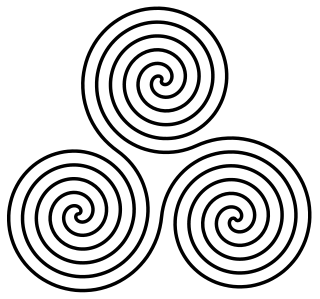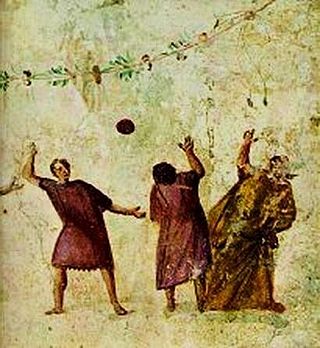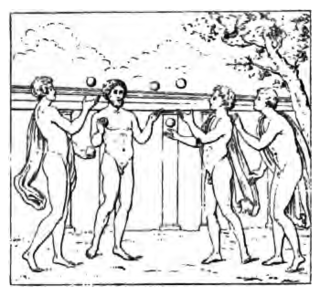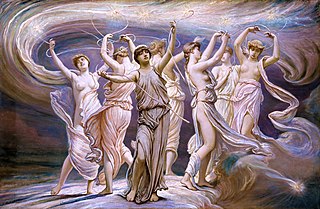Lexicography is the study of lexicons, and is divided into two separate academic disciplines. It is the art of compiling dictionaries.

In Western culture, "the finger", or the middle finger also represented as "🖕" is an obscene hand gesture. The gesture communicates moderate to extreme contempt, and is roughly equivalent in meaning to "fuck you", "fuck me", "shove it up your ass/arse", "up yours", or "go fuck yourself". It is performed by showing the back of a hand that has only the middle finger extended upwards, though in some locales, the thumb is extended. Extending the finger is considered a symbol of contempt in several cultures, especially in the Western world. Many cultures use similar gestures to display their disrespect, although others use it to express pointing without intentional disrespect. The gesture is usually used to express contempt but can also be used humorously or playfully.

A marionette is a puppet controlled from above using wires or strings depending on regional variations. A marionette's puppeteer is called a marionettist. Marionettes are operated with the puppeteer hidden or revealed to an audience by using a vertical or horizontal control bar in different forms of theatres or entertainment venues. They have also been used in films and on television. The attachment of the strings varies according to its character or purpose.

Petroselinum is a genus of two parsley species of flowering plants in the family Apiaceae, native to western and southern Europe and northern Africa.

A triskelion or triskeles is an ancient motif consisting either of a triple spiral exhibiting rotational symmetry or of other patterns in triplicate that emanate from a common center. The spiral design can be based on interlocking Archimedean spirals, or represent three bent human legs. It occurs in artifacts of the European Neolithic and Bronze Ages with continuation into the Iron Age – especially in the context of the La Tène culture and of related Celtic traditions. The actual triskeles symbol of three human legs is found especially in Greek antiquity, beginning in archaic pottery and continued in coinage of the classical period.

A Greek–English Lexicon, often referred to as Liddell & Scott or Liddell–Scott–Jones (LSJ), is a standard lexicographical work of the Ancient Greek language originally edited by Henry George Liddell, Robert Scott, Henry Stuart Jones, and Roderick McKenzie and published in 1843 by the Oxford University Press.

A span is the distance measured by a human hand, from the tip of the thumb to the tip of the little finger. In ancient times, a span was considered to be half a cubit. Sometimes the distinction is made between the great span or full span and little span or short span.

Theobroma is a genus of flowering plants in the mallow family, Malvaceae, that is sometimes classified as a member of Sterculiaceae. It contains roughly 20 species of small understory trees native to the tropical forests of Central and South America.

In Christian iconography, Christ Pantocrator is a specific depiction of Christ. Pantocrator or Pantokrator, literally ruler of all, but usually translated as "Almighty" or "all-powerful", is derived from one of many names of God in Judaism.

Paronychia is an inflammation of the skin around the nail, which can occur suddenly, when it is usually due to the bacterium Staphylococcus aureus, or gradually when it is commonly caused by the fungus Candida albicans. The term is from Greek: παρωνυχία from para 'around', onyx 'nail', and the abstract noun suffix -ia.
Ancient Greek units of measurement varied according to location and epoch. Systems of ancient weights and measures evolved as needs changed; Solon and other lawgivers also reformed them en bloc. Some units of measurement were found to be convenient for trade within the Mediterranean region and these units became increasingly common to different city states. The calibration and use of measuring devices became more sophisticated. By about 500 BC, Athens had a central depository of official weights and measures, the Tholos, where merchants were required to test their measuring devices against official standards.

The polybolos was an ancient Greek repeating ballista, reputedly invented by Dionysius of Alexandria and used in antiquity. The polybolos was not a crossbow since it used a torsion mechanism, drawing its power from twisted sinew-bundles.

Halteres were a type of dumbbells used in Ancient Greece. In Ancient Greek sports, halteres were used as lifting weights, and also as weights in their version of the long jump. Halteres were held in both hands to allow an athlete to jump a greater distance; they may have been dropped after the first or second jump.

Harpastum, also known as harpustum, was a form of ball game played in the Roman Empire. The Romans also referred to it as the small ball game. The ball used was small and hard, probably about the size and solidity of a softball and was stuffed with feathers. The word harpastum is the latinisation of the Greek ἁρπαστόν, the neuter of ἁρπαστός, "carried away", from the verb ἁρπάζω, "to seize, to snatch".

Trigon was a form of ball game played by the ancient Romans. The name derives from the Greek τρίγωνος, and may have been a romanized version of a Greek game called τρίγων. It was a type of juggling game, probably involved three players standing in a triangle and passing a hard ball back and forth, catching with the left and throwing with the right hand. Besides the three players, called trigonali, there were also assistants called pilecripi, who kept score and retrieved runaway balls.

Ancient Greek boxing dates back to at least the 8th century BC, and was practiced in a variety of social contexts in different Greek city-states. Most extant sources about ancient Greek boxing are fragmentary or legendary, making it difficult to reconstruct the rules, customs and history surrounding this activity in great detail. Still, it is clear that gloved boxing bouts were a significant part of ancient Greek athletic culture throughout the early classical period.

Alcyone, in Greek mythology, was the name of one of the Pleiades, daughters of Atlas and Pleione or, more rarely, Aethra. She attracted the attention of the god Poseidon and bore him several children, variously named in the sources: Hyrieus, Hyperenor, and Aethusa; Hyperes and Anthas; and Epopeus. By a mortal, Anthedon, Alcyone became the mother of the fisherman Glaucus, who was later transformed into a marine god.
The Infinity Stones are fictional items in the Marvel Cinematic Universe (MCU) media franchise, based on the Infinity Gems of the Marvel Comics. As expounded across several interwoven MCU multimedia titles, the six Infinity Stones are reputed to embody and control essential aspects of existence—Space, Mind, Reality, Power, Time and Soul—thereby making them critical artifacts in the MCU and, together, the MacGuffin of the dedicated Infinity Saga.

Thanos is a fictional character portrayed primarily by Josh Brolin in the Marvel Cinematic Universe (MCU) media franchise, based on the Marvel Comics supervillain of the same name. He is depicted as an alien warlord from the doomed planet Titan with a universe-spanning agenda to wipe out half of all life to stabilize overpopulation and prevent what he views as life's inevitable extinction. To do this, he sets out to obtain the six Infinity Stones, cosmic gems with the power to achieve his goal. With the help of his adopted children, Thanos fights against the Avengers, the Guardians of the Galaxy, and their allies, in the Infinity War, succeeds in assembling the Stones, and disintegrates half of all life in the universe in an event that is known as the Blip. After escaping to the Garden and destroying the Stones, he is eventually killed by Thor. Five years later, an alternate version of Thanos from 2014 time travels to 2023 to battle the Avengers once again, but is killed by Tony Stark.

The Blip is a major fictional event and period of time depicted in the Marvel Cinematic Universe. The Blip began in 2018 when Thanos, wielding all six Infinity Stones in the Infinity Gauntlet, exterminated half of all living things in the universe, chosen at random, with the snap of his fingers. The Blip ended five years later, in 2023, when the Avengers utilized time travel to collect the Infinity Stones from prior points in the timeline and, with a second snap by Avengers member Bruce Banner, restored all those previously killed by Thanos.

















